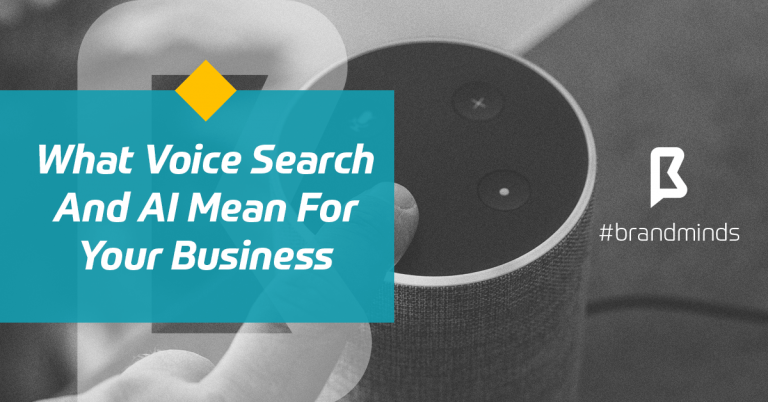Prof Dr Enrico Molinari – The adoption of AI is driven by people and their emotional involvement
Prof. Dr Enrico Molinari is a recognized influencer in new technologies with extended expertise in digital innovation & transformation of the banking and financial sector.
Given his high-technical profile, he is called upon by top organizations and global companies to give his contribution as a digital transformation leader and global expert.
As the Innovation Manager at the Italian Chamber of Commerce System, Prof Molinari is leading the adoption of emerging disruptive technologies in organizations in the public sector.
Many international independent authorities and organizations have ranked Prof Molinari as a top certified global influencer in GovTech*, Fintech, Finserv, Insurtech, PropTech**, ESG***, AI, Marketing Innovation and Business Technology for Digital Transformation.
He is also a respected university professor in economics & fintech, marketing innovation, digital transformation & company culture and business technologies.

Prof Dr Enrico Molinari
In the interview below, Prof Molinari shared with us his insights on the connection between business success and Artificial Intelligence, what companies should do to become innovation-driven and how leadership should approach the digital transformation of the business.
IS ARTIFICIAL INTELLIGENCE A REQUIREMENT FOR BUSINESSES LOOKING TO BECOME SUCCESSFUL?
AI is the core of the decision‐making processes of successful organizations and represents for companies a disruptive opportunity for growth, optimization of operations and in‐depth diversification as it was the opening of a website in the 2000s or a customer‐oriented eCommerce platform during the last 10 years.
The real challenge today is to transfer the culture of the data value inside the company’s DNA through a decision‐making process that is shared between CIO and staff.
Our role today is to transform a technology like AI into a new continent, a new economic superpower available to all.
WHAT SEGMENTS OF THE BUSINESS BENEFIT FROM AI THE MOST?
I often say that AI has an open roadmap and a democratic business plan reshaped every day by businesses, citizens and the Public Administration to respond to the ever‐changing reality.
The COVID‐19 pandemic is proof of how history always teaches that great opportunities and the future of society arise from great crises.
AI in Digital Health is potentially the most interesting for our future and the pandemic has made its contribution even more evident during the first waves in healthcare.
But AI will make a difference too in the Agri‐Food (#AgriTech) sector to optimize, certify and distribute food, avoiding waste and overproduction, in #FinTech to make access to finserv resources all over the world and in the #ESG linked to new infrastructures to reduce polluting emissions, thus enhancing the circular economy to more effectively prevent natural disasters (#ClimateChange).
Let’s not forget sectors such as tourism (#TravelTech) and heritage (#EdTech) for the conservation of cultural and landscape assets, as well as their enhancement through virtual visits to tourist destinations.
Another important sector is the Public Administration (#OpenPA & #GovTech). Here AI can implement the integration and interoperability of public databases to offer better services.
Regarding #SmartCities, AI can improve the safety (#CyberSecurity) and well‐being of citizens through traffic and lighting management, optimization of public transport, and monitoring of the state of bridges, buildings and buildings.
Finally, as an Italian, I’ll promise we work all together for AI to introduce the process and product innovations in the artisan manufacturing sector, with the goal to increase the international competitiveness of the prestigious Made in Italy label.
BECOMING INNOVATIVE IS CHALLENGING FOR BUSINESSES. ARE ANY PARTICULAR STRUCTURES OR PROCESSES NECESSARY FOR BUSINESSES TO BECOME INNOVATION‐DRIVEN?
Investing in business process innovation thanks to emerging technology is one of the key factors for reshaping the vision of the post‐pandemic period, but it’s an even more strategic investment in the hard and soft skills of People.
The hard skills include the job‐related knowledge and abilities that employees need to perform their job duties effectively thanks to AI acceleration. They are joined by soft skills like personal qualities and together they help people achieve solid company goals in the Next New and to recognize themselves as the leader in their workplace. It’s a real mindset change in the real world.
HOW SHOULD LEADERSHIP APPROACH THE AI‐DRIVEN TRANSFORMATION OF BUSINESS?
The “Digital Transformation” immediately makes us think of technology. But the adoption of AI is driven by people and their emotional involvement.
Organizations are successful when they support employees to improve their knowledge, to feel part of a project and inside a collaboration roadmap between human beings and technology, AI and computing power.
In addition to this, organizations must reduce bureaucracy and the decision‐centric business units, stimulating teams on decision‐making processes and setting up pilot digital innovation hubs & groups using remote working platforms.
By implementing all these changes, organizations will transform AI technology into a Natural Leadership Intelligence.
At a glance, the AI‐driven transformation of business is people, not technology.
FOR LEGACY BUSINESSES, INNOVATION HAS BEEN CHALLENGING. WHAT ABOUT BUSINESSES LAUNCHING TODAY: ARE THEY BUILDING THEIR FOUNDATION AROUND INNOVATION FROM DAY ONE?
According to Accenture, 84% of CEOs of the global businesses cross-market and industry will not be able to achieve growth goals without using and scaling Artificial Intelligence.
This scenario also strengthens the vision of executives of businesses launching today as responsible for choosing innovation to create value in their startups through the organization’s management.
Applying AI across all business units as well as giving access to its growth opportunities reshapes the growing business model and increases productivity.
The fundamental question is: how to do it?
Adopting AI is definitely not enough because to make entirely new results possible tomorrow, you need to begin scaling it today. The Big Data analysis, the automation and the push of the Cloud to access the related data will make the difference in empowering people and processes.
NAME ONE DIGITAL TOOL YOU USE DAILY THAT HAS IMPROVED YOUR LIFE IMMENSELY
I’m proud and honoured to see and work every day with the most innovative and revolutionary technologies of the century, many of which are not yet known on the market.
Only 5 years ago we could not have imagined the daily digital transformation impact on our simplest life habits, both at work and in private life. From paying renewable energy via blockchain bills to the delivery of COVID‐19 vaccines by drones, the new role of fintech & digital payments to decentralize our finance, buy online or benefit from applied AI to digital health, we see a Copernican revolution around us.
But the most important technology I use every day is Humans. It is easy to connect objects online today, but the qualitative leap is #ConnectingPeople and sharing different experiences and emotional intelligence.
WHAT IS THE MOST INTERESTING THING IN FINTECH RIGHT NOW?
2021 was a year of record growth and investment in the fintech sector worldwide which recorded 5,600 VC, Private Equity and M&A transactions for $210 billion, according to a McKinsey & Company report.
At the same time, KPMG highlights the in‐depth growth of the blockchain and cryptocurrency, hot topics in the financial sector.
In my opinion, already in 2022, we will have to focus attention on the Digital Payments segment that will seduce the market with the Buy Now, Pay Later ‐ a financial service for pushing to buy the products available on e‐commerce in instalments.
This service encourages the conversion rate of the average shopping cart of customers. Buy Now, Pay Later has an increased safety level thanks to the structured use of AI‐Cybersec Crime platforms against fraud and financial crimes, risk management, analysis of suspicious transactions related to tax evasion and monitoring of money laundering flows resulting from the explosion of Crypto Art through NFTs.
WHAT BOOK ON TECH OR BUSINESS ARE YOU READING NOW?
On my desk, at the office, I have “Selected Economic Essays” by Luigi Einaudi, a senior Italian economist and a reputed researcher at Princeton, Cambridge and Institut de Sciences Politiques. The book is Prof Einaudi’s outstanding contribution to global economics.
On my desk at home, I have “The Hydrogen Economy” by Prof. Jeremy Rifkin I had the honour of knowing. It is a book published twenty years ago, but very actual in terms of geopolitics and the transition from fossil fuels to renewables.
And then I’m writing one too! Let’s keep in touch for spoilers about! (to be continued …)
WHAT DO YOU DO TO FIND INSPIRATION?
Inspiration is all around me because Innovation and the Future are all around us.
I draw inspiration from people. From my university students who never stop to amaze me, from my colleagues both in the corporate and in the Public Administration and from friends such as Jim, Danielle, Theo, Spiros, Mario, Riccardo, Glen, Tony, Nicolas.
I am inspired by the things that work as well as those that don’t work. And from my wife Barbara, the best part of me, my constant balance and my permanent centre of gravity.
————————————————————————————————————————–
*GovTech = Government and Technology; government approach to public sector modernization. GovTech emphasizes three aspects of public sector modernization: citizen-centric public services that are universally accessible, a whole-of-government approach to digital government transformation, and simple, efficient and transparent government systems (definition source)
**PropTech = Property and Technology; the use of information technology (IT) to help individuals and companies research, buy, sell and manage real estate (definition source)
***ESG = Environmental, Social and Governance; Environmental, social, and governance (ESG) criteria are a set of standards for a company’s operations that socially conscious investors use to screen potential investments (definition source).
Video streaming industry expected to grow to $150 billion by 2026
According to the latest research, the video streaming industry is expected to grow to $150 billion by 2026 at CAGR of 18%.
In this article:
- Video streaming industry stats and facts
- Key factors driving the video streaming industry growth
- Key restraining factors for the growth of video streaming industry
- Opportunities
Video streaming industry stats and facts
![]() Due to lockdown, Internet users are spending 32% of their time on streaming devices and platforms (Market);
Due to lockdown, Internet users are spending 32% of their time on streaming devices and platforms (Market);
 54% of Internet users are watching more shows and films on streaming services due to Covid-19 (Market);
54% of Internet users are watching more shows and films on streaming services due to Covid-19 (Market);
 Key players in the video streaming software market: IBM, Vimeo, Brightcove, Qumu, Kaltura, Wowza etc;
Key players in the video streaming software market: IBM, Vimeo, Brightcove, Qumu, Kaltura, Wowza etc;
 Key players in the VoD market: Netflix, Hulu, Disney, HBO, Apple, Google, AT&T, Amazon, YouTube;
Key players in the VoD market: Netflix, Hulu, Disney, HBO, Apple, Google, AT&T, Amazon, YouTube;
 Media and Entertainment, BFSI, Healthcare, and Academia and Education, eCommerce contribute to ~60-70% of the market;
Media and Entertainment, BFSI, Healthcare, and Academia and Education, eCommerce contribute to ~60-70% of the market;
 The fastest-growing video streaming market is China. China’s live-streaming industry has more than doubled in size compared with the previous year, reaching now $5 billion (Researchgate);
The fastest-growing video streaming market is China. China’s live-streaming industry has more than doubled in size compared with the previous year, reaching now $5 billion (Researchgate);
 In India, the video streaming industry is projected to reach $465 million by the end of 2020 (Statista)
In India, the video streaming industry is projected to reach $465 million by the end of 2020 (Statista)
 The largest video streaming market is the US. Here the video streaming industry is projected to reach $24 billion in 2020 (Statista)
The largest video streaming market is the US. Here the video streaming industry is projected to reach $24 billion in 2020 (Statista)
 The fastest-growing segments in the video streaming industry are:
The fastest-growing segments in the video streaming industry are:
- Video Analytics. Video analytics allow service providers to better understand their audiences, serve them better and thus, remain competitive.
- Live streaming. Live streaming helps audiences feel more engaged and more connected with the person in front of the camera.

Key factors driving the video streaming industry growth
 Increasing penetration of mobile devices and internet users
Increasing penetration of mobile devices and internet users
In 2020, the number of global smartphone users is projected to total 3.5 billion, marking a 9.3% increase from 2019. The current global population of 7.7 billion people means the smartphone penetration rate is at 45.4 %. (Oberlo)
Almost 4.66 billion people were active internet users as of October 2020, encompassing 59% of the global population. Mobile has now become the most important channel for internet access worldwide as mobile internet users account for 91% of total internet users. (Statista)
 Growing demand for VoD streaming
Growing demand for VoD streaming
According to Cisco, video will account for 82% of all Internet traffic by 2022.
 Remote work & Lockdown
Remote work & Lockdown
The COVID-19 pandemic has had serious consequences on business too with a large number of employees working remotely.
More than 1/4th of the world’s population went into lockdown. This has resulted in increased demand for online streaming and entertainment services.
Netflix added 26 million new subscribers in the first six months of 2020 which accounts for the company’s biggest growth spurt in history. As of the third quarter of 2020, Netflix had 195.15 million paid subscribers worldwide. (Forbes)
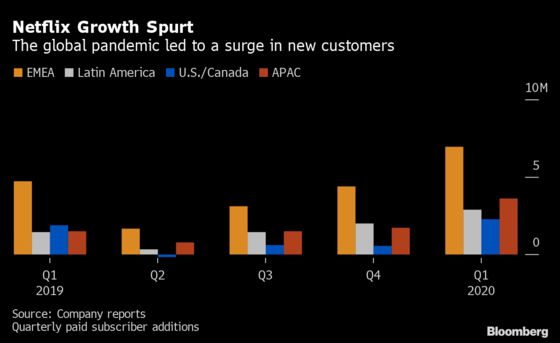
Disney+ launched a year ago with the goal of reaching 60 million to 90 million subscriptions by 2024. The company has recently announced that the platform surpassed 74 million subscribers by the end of 2020, outperforming all expectations. (CNBC)
Apple TV+ also launched a year ago and is included in the company’s One subscription bundle. The company hasn’t released any info regarding the number of its paying subscribers but estimations range from 10 million to 40 million subscribers. (TheVerge)
As of January 2020, there are over 150 million Amazon Prime Video users. (Market)
 Growing adoption of cloud-based solutions
Growing adoption of cloud-based solutions
The global public cloud service market is projected to reach $266 billion in 2020. This spells out a projected growth of 17.3% since 2018. According to Gartner’s forecast, infrastructure-as-a-service (IaaS) solutions, like cloud storage, will be the fastest-growing segment of the market with 24% predicted growth. (Hosting Tribunal)
 Growing demands of Live Video streaming solution
Growing demands of Live Video streaming solution
Over the past few years, going live on Facebook has become a popular feature among its users. Today live video is on almost every social platform: Instagram, Twitter, LinkedIn, Snapchat, YouTube etc.
 Technology innovations like blockchain and AI
Technology innovations like blockchain and AI
Video streaming as a service relies entirely on technology. Video streaming is not possible without video storage, encoding, networking and streaming. Blockchain technology expands storage options by spreading data across the blockchain computer network. Streaming video will be able to tap into underutilized computers through the Blockchain, which will dramatically reduce streaming’s cost (learn more).
From face recognition to chatbots and disease mapping, AI has a wide range of applications across many verticals. In video streaming, AI helps with workflow optimization, content-aware encoding and bandwidth use optimization while maintaining an appropriate level of quality. The main benefit of using AI in video streaming is cost saving.
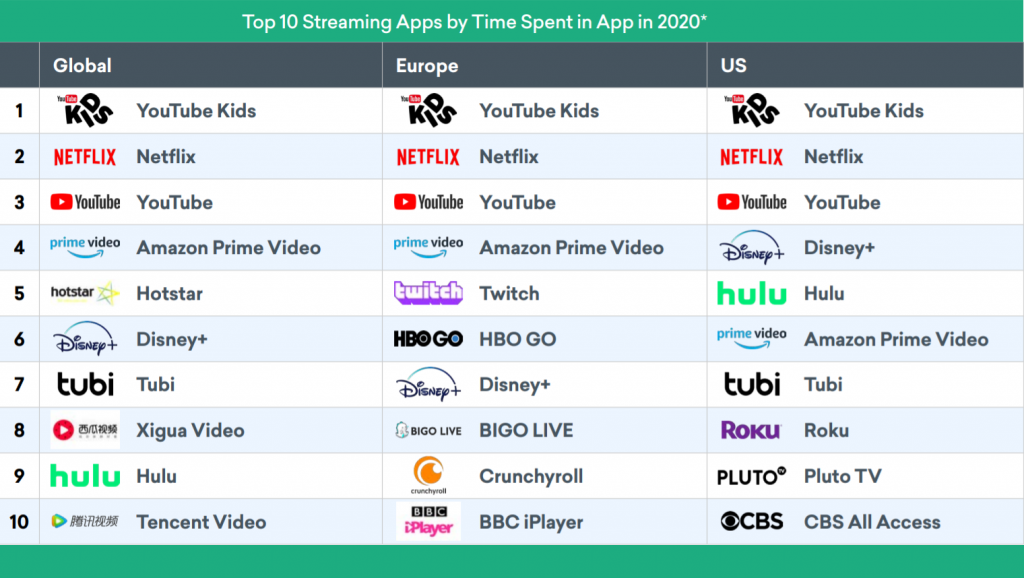
Key restraining factors for the growth of video streaming industry
- connectivity issues;
- latency and bandwidth issues which may result in poor quality video;
- a surge in internet traffic;
- data loss due to buffering;
- the disparity among software systems;
- high content cost;
- easy availability of pirated data;
- loss of personal and financial details.

Opportunities
Over the past few years, digital transformation has been in the top three goals for businesses everywhere.
The pandemic-induced lockdown forced businesses that had already started down this path to speed up and businesses that had a traditional high-street or in-person revenue generation model to pivot toward online and digital.
As a result, this year has seen teachers teach classes online to students ranging from first-graders to executive MBA participants.
Doctors see their patients through their PC’s camera first and popular talk show hosts broadcast from their homes.
Live music and business events have gone online, each of them looking to provide attendees with the best experience possible.
International banks with thousands of branches worldwide are making the most of the digital environment allowing their clients to keep safe.

Conclusion
Video streaming industry is projected to grow to $150 billion by 2026.
The industry has been growing steadily in recent years but the pandemic has accelerated its growth.
Remains to be seen if the industry will maintain its growth rate after the pandemic is over.
Join the Conversation
We’d love to hear what you have to say.
Get in touch with us on our LinkedIn Page, Facebook Page, Twitter or TikTok.
Go master quits because AI ‘cannot be defeated’
Go master retires from Chinese strategy game after playing against Google algorithm.
Check out the video to find out more:
How AI transformed Amazon into an eCommerce powerhouse
Amazon is an eCommerce powerhouse. In 2019, the giant retailer is expected to hit a 52% market share in the US and almost 14% worldwide.
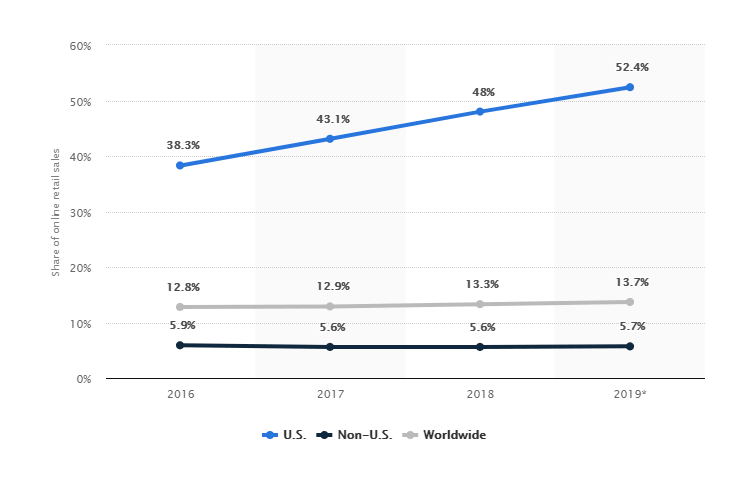
Amazon global market share 2016-2019 / Statista
Here are 6 relevant statistics which help paint a bigger picture and explain how Amazon dominates the American retail eCommerce:
- During July 2019, Amazon.com had almost 2.65 billion combined desktop and mobile visits, making the platform the most visited e-commerce property in the US;
- In 2018, the company reported total net revenue of $232.89 billion;
- For 2019, the biggest revenue segment were online stores with $31.05 billion in quarterly net sales;
- AWS, Amazon’s subsidiary that provides on-demand cloud computing platforms to individuals, companies, and governments is the platform’s second source of revenue in the amount of $8.3 billion;
- Amazon owns more than 90% market share in 5 product categories: Batteries (97%), Kitchen & Dining (94%), Home Improvement Tools (93%), Golf (92%), and Skin Care (91%) (source);
- Amazon Prime has over 100 million users and has generated $9.7 billion in subscription revenue.
AI is the foundation upon which Amazon grows its online sales and other services
From predicting how many customers might buy a new product to running Amazon Go, the cashier-less grocery store to assessing the quality of fruits and vegetables without smelling them for Amazon Fresh because humans are too slow and inconsistent.
Amazon’s AI capabilities allow the platform to provide customized recommendations. According to the latest reports, Amazon’s recommendation engine drives 35% of total sales.
With more than 100 million Alexa devices having been sold, Amazon’s smart speaker maintains a 70% market share in the US. In a statement on the last quarter of fiscal 2018, Jeff Bezos said Echo Dot was the best-selling item across all products on Amazon globally, and customers purchased millions more devices from the Echo family compared to last year (source).
In 2018, Amazon developers improved Alexa’s ability to understand requests and answer questions by more than 20% through advances in machine learning. Also, the number of research scientists working on Alexa has more than doubled in the past year, Bezos noted.
The giant American e-commerce retailer builds everything on AI because AI solves shoppers’ problems which in turn supports Amazon’s customer-centric approach.
The latest 4 AI-driven company operations and platform features
Aside from the recommendation engine, here are 4 of the latest AI-driven company operations and platform features:
1. AI optimization in the fulfilment centre
There are 1 to 4 million bins per fulfilment centre (warehouse) and on the order of 10 million items. In every fulfilment centre, computer vision systems analyze images to help Amazon staff keep track of everything.
Based on data, AI solves a large combinatorial optimization problem and decides which orders to pick at the same time in order to get them in the same box. This way the system minimizes the distance the transport pods have to travel.
AI optimization makes these decisions in real-time and with information that is constantly changing.
2. Machine learning for Amazon’s product graph
The giant retailer based its product graph on machine learning allowing it to describe every item using product and non-product concepts. The system also forms links between different entities, solving actual customer needs.
People don’t just come to Amazon to buy products. They visit Amazon to see what’s new or interesting, or to discover ways they can simplify and enrich their lives.
Xin Luna Dong – principle scientist on Amazon product graph
3. StyleSnap – AI-powered fashion discovery

StyleSnap is the latest Amazon AI-powered feature which supports fashion-focused shoppers.
How does it work?
The shopper takes a photograph or screenshot of a look that they like, upload it in the app and StyleSnap presents them with recommendations for similar items on Amazon that match the look in the photo. StyleSnap also considers a variety of factors such as brand, price range, and customer reviews.
4. Alexa is helping the blind with its latest feature, Show and Tell
As a customer-centric business, Amazon listens to customer feedback. The blind and visually impaired make up one category of Alexa devices customers. Amazon researchers have provided the smart speaker with a new feature designed to cater to the needs of the blind and visually impaired called Show and Tell.
Show and Tell allows the blind to identify grocery items by holding each item to the Echo Show camera and ask, “Alexa, what am I holding?”. The smart speaker identifies the item through advanced computer vision and machine learning technologies for object recognition.
To learn more about the ways Artificial Intelligence could improve e-commerce businesses, I reached out to Alin Neacsu, AI expert and CTO at Deqod and invited him to answer the following question:
Why should eCommerce sites leverage the power of Artificial Intelligence?
Here is Alin’s answer:
The eCommerce industry is witnessing a redefined form that takes customers to a new level of experience and gratification.
Contributing value to your customers is the only way to sustain, grow, and outshine your business rivals.
Brands now intensively should invest their money in exploring how AI can increase brand competitiveness, various processes, customer loyalty & at last, revenues.
Companies are implementing AI to cut service costs — resolving inbound requests via self-service and quickly answering customer questions through conversational AI and intelligent process automation.
Artificial Intelligence enables a business to understand its customers better and do so more quickly. This capability feeds into an improved overall customer experience using sophisticated email algorithms and automated chatbots.
Another crucial aspect where AI has proven to be of valuable assistance is cart abandonment. It helps expand customer engagement by reducing cart abandonment rates by a substantial extent using Facebook messenger, email, SMS or other channels on the site.
Consumers are often disappointed with eCommerce experience because the product results shown are often irrelevant. To tackle this problem, AI uses natural language processing to narrow, contextualize and improve search results for online shoppers.
Also, it allows having visual search capabilities, finding and matching products. Now, consumers can take a picture of a friend’s new shoes or a new shirt, upload it and then AI enables consumers to easily find similar items through eCommerce stores.
Knowing who your competitors are, and what they are offering can help product owners to make their products, services and marketing really stand out.
The big data tools powered by AI can help shop owners to monitor pricing patterns because frequent analysis of pricing patterns helps them stay competitive. Big data analytics allows them to compare their businesses with those of their competitors’ in just seconds and that can be used to increase the market share. More than 80% of enterprises believe big data analytics will redefine the competitive landscape of their industries within the next few years.
Artificial intelligence marketing is looking to change the game of leveraging customer data with newfound concepts of machine learning. Its purpose is to anticipate the next right move to enhance a customer’s journey which in my opinion is still far from being perfect.
How do you plan to use AI to help your company’s sales?
Let me know in the comments.
Join the Conversation
We’d love to hear what you have to say.
Get in touch with us on Facebook Group and Twitter.
World’s First AI Universe Simulator
Researchers have created an AI system capable of constructing 3D simulations of the universe.
Find out more in the video!
![]() Learn more about AI: AI is writing news stories
Learn more about AI: AI is writing news stories
Join the Conversation
We’d love to hear what you have to say.
Get in touch with us on Facebook Group and Twitter.
This Tool Allows You To Spot Fake Videos of Real People
Today wars are fought on digital battlegrounds like Facebook and Twitter. The weapons used to wage these wars don’t kill people like guns do but are equally dangerous: fake news has been reported to have influenced the 2016 US presidential election.
Three years before that, the World Economic Forum designated massive digital misinformation (i.e. fake news) as a major technological and geopolitical risk, but I guess the world needed to see it to believe it.
If fake news can cause damage at such a large scale, what about fake videos of real people?
It is possible to make fake videos of real people with the help of AI
AI-based technology allows you to do pretty much anything these days. From writing news stories to making restaurant bookings to creating movie trailers. The possibilities are virtually endless.
Before 2017 faking a real person hadn’t been done yet, but it was technically possible. The journey towards making a fake video of a real person started with Google Duplex, the virtual assistant which carries out conversations in a human-like voice. The next step in this journey was to take it from audio to video. This technology development was achieved by computer scientist and Google engineer Supasorn Suwajanakorn.
As a grad student, Supasorn Suwajanakorn used AI and 3D modelling to create realistic videos of real persons synced to audio. By closely observing existing footage and photos that anyone can find on the internet, Supasorn developed a tool which mimics the way a person talks.
Watch Supasorn show how this tool works:
Reality Defender fights against fake photos and videos
As he says in his speech, Supasorn realized the ethical implications and foresaw how his tool could be used if fallen into the wrong hands.
To fight against the misuse of his tool, Supasorn created Reality Defender in collaboration with AI Foundation.
AI Foundation is a non-profit & a for-profit organization working to move the world forward with AI responsibly.

Reality Defender / aifoundation.com
Reality Defender is intelligent software built to detect potentially fake media.
The tool is similar to virus protection, in that it scans every image, video, and other media that a user encounters when browsing the internet.

Reality Defender / aifoundation.com
It reports of suspected fakes and runs new media through various AI-driven analysis techniques to detect signs of alteration or artificial generation.
Why is this important?
We rather expect fashion images and public person images online to be altered but we expect news images to be a snapshot of reality.
Altered news images have significant and dangerous consequences such as audience manipulation and distortion of the truth.
Remember Wag the Dog, the movie where a Hollywood producer fabricates an entire war in Albania using video and sound effects to distract the media’s attention from a Presidential crisis?
Join the Conversation
We’d love to hear what you have to say.
Get in touch with us on Facebook Group and Twitter.
A.I. Is Writing News Stories
This article is about three A.I.s writing stories for prominent publishers.
Communication is the act of conveying meanings from one entity to another through the use of mutually understood signs, symbols, and semiotic rules. There are two entities involved: the transmitter of the message and the recipient.
The rise of A.I. has changed how people communicate with each other. Google Duplex assists humans with scheduling certain types of appointments. The virtual assistant carries out conversations in a human-like voice essentially replacing the human transmitter of the message.
Does this mean we need to redefine the theory of communication to include a third entity of non-biological descent?
If the A.I. involvement with the spoken word is more easily accepted due to its fleeting nature, what about the written word?
Let’s see 3 A.I.s currently assisting prominent publishers:
2. Heliograf – The Washington Post
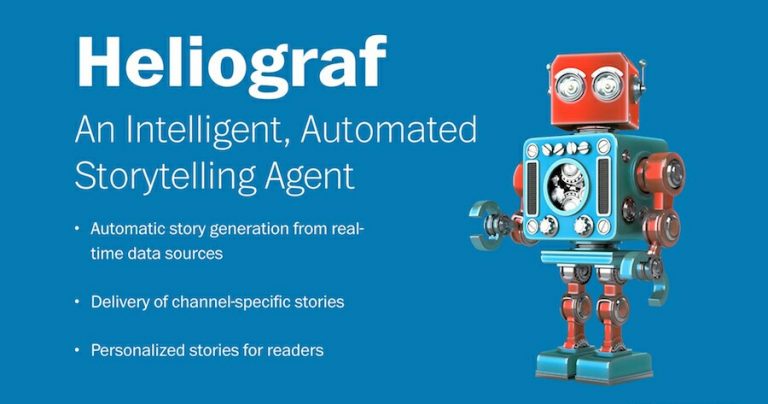
image source: blog.drhack.net
In 2017, the Amazon-acquired Washington Post began using A.I. to write articles. The writing A.I. is called Heliograf and began its writing career by creating pieces on the Rio Olympics, local sports and the election.
Within a year since the publisher started using Heliograf, the A.I. technology has produced 850 articles.
The purpose of Heliograf is to enable journalists to do more high-value, in-depth work, not to take their jobs.
Technology like Heliograf can be transformative for a newsroom, greatly expanding the breadth of coverage and allowing journalists to focus more on in-depth reporting.
Scot Gillespie, Chief Technology Officer at The Post
2. Bertie – Forbes

image source: foliomag.com
Bertie is Forbes’ supporting A.I.
The publisher has been using the artificial intelligence technology, named after brand founder B.C. Forbes, beginning with the summer of 2018.
The tool works as follows:
- It recommends article topics for contributors based on their previous output;
- It suggests headlines based on the sentiment of their pieces;
- It recommends appropriate images to illustrate and improve contributors’ articles.
Forbes’ contributors write and produce nearly 300 pieces of content a day and Bertie was designed to help them with thought-starters, getting their creative juices flowing. The A.I. is not writing the articles itself. But this is not so far in the future.
Aside from Bertie, Forbes is contemplating enrolling another A.I. tool, this time a story-writing tool. The publisher has not revealed further information on this particular A.I.-powered tool besides the fact that testing is underway.
Forbes is using Bertie to “make publishing more efficient for Forbes staff and to make it as easy as possible for visitors to consume multimedia content on Forbes’ sites” according to Forbes Media’s new chief digital officer, Salah Zalatimo.
3. Lynx – Reuters’ Insights Tool

image source: Reuters@facebook.com
Reuters started rolling out Lynx, its new editor system in late 2011. Back then, Lynx was designed to help journalists write, edit and file copy. The Lynx system was also designed to take over the management of stories load which can amount to 10.000 stories filed over weekends.
In 2018 Lynx was upgraded from editing and filing to gathering insights. Lynx Insights is “a new in-house automation tool designed to augment reporting by surfacing trends, facts, and anomalies in data, which reporters can then use to accelerate the production of their existing stories or spot new ones.” (source: niemanlab.org)
Speed is an important issue in news reporting, so Lynx Insights was developed with the ability to comb through massive sets of data within a short timeframe. Lynx brings to light unexpected connections and unearths hidden insights. It’s a collaboration-based work: the A.I. tool gives the reporters results on specific queries and the reporters add their conclusions based on judgement and context.
Automated journalism will likely replace journalists who merely cover routine topics. (…) In the future, human and automated journalism will likely become closely integrated and form a ‘man–machine marriage.’
Andreas Graefe, author of Guide to Automated Journalism via niemanlab.org
Conclusions
Whether is reporting news of minor importance, uncovering valuable and unexpected insights or helping contributors produce content more efficiently, automated journalism is here to stay.
What’s next? What about A.I. writing books? Books are the vessels of our collective knowledge. Writing a book is a personal endeavour and a great achievement.
Could A.I. write books? Would you read them?
Maybe writing books is too distant in the future but writing news articles is already taking place today.
Join the Conversation
We’d love to hear what you have to say.
Get in touch with us on Facebook Group and Twitter.
What Voice Search And AI Mean For Your Business
By 2020, around half of all searches will be conducted through voice search.
At least, that’s what the team at SEO Tribunal discovered when it conducted extensive research into the area.
Voice search is not a novel concept. If you have a smartphone, tablet, or even a laptop, you might already have used it yourself.
There’s no question that it makes searching for things online a lot simpler. After all, why type out a query when you can just ask your device to look for the answer?
If you’re not that clued up when it comes to voice search, the infographic below will tell you all that you need to know.
In this post, however, we’re more interested in how voice search and AI will affect businesses going forward.
Are you ready to learn more?
Advances In AI Have Made Voice Search Viable
The earliest versions of personal assistants were comparatively stupid by today’s standards. You had to get the exact keyword and spelling right to get close to getting the right answer. Even then the results were not very accurate.
Today however, AI is far more advanced, making voice searches a lot more accurate. In addition, virtual assistants like Siri, Cortana, Duplex etc. can collect results on their own and give you a quick summary of what they found.
The increase in the capabilities of these assistants has led to the creation of smart devices, such as smart speakers. These devices make full use of voice recognition software and can become a hub in the home.
All you have to do is to say the magic phrase, like Hello Google and your speaker will be activated. From there, you can run a voice search or tell your assistant to play music, for example.
What’s Does This Mean for Your Business?
Well, for starters, it means that your site must be optimized for voice search. But don’t let that stress you out too much, it’s not that much of a departure from what you are doing already. What you need to do is to start thinking as someone would if using a voice query.
Queries Are Changing
When we try to type out a query we tend to be a bit more economical with the number of words we use. We aim to use the minimum number of words because that means less typing. This further means that it’s a lot easier to narrow down the number of keywords to target.
With voice search, the opposite is true. We simply phrase the query as we normally would. It means that the number of keywords that might be used increases a lot. Also, the queries will take the form of questions, rather than simple phrases.
How to Prepare for Voice Search
It is actually a lot easier to optimize content for voice search than you might think.
You’ll need to think about the types of questions that people might ask in relation to your business, and then incorporate these into your site.
Setting up a comprehensive FAQ page is a good way to get started. But you can also start to incorporate more question style content on your site. So, for example, you could create a post titled,” What process do we use?” instead of “The Process We Use.”
It’s a subtle distinction, but one that better matches the format of queries to come. It will also work well when it comes to typed queries, so it’s not going to hurt your results now either.
Consistency Is Essential
There is one area where voice search could hurt business though, and that’s when it comes to the aggregated content provided.
Let’s say that someone asks Google for information about music shops in the area. Google will create a summary of the information based on numerous sources. What Google cannot do, however, is check that the information is correct. It could be a problem for you if there is info out there that is incorrect.
Say, for example, that your business was listed in a few online directories and then you moved. It isn’t a problem for you, you just update the information on your site. But Google will still pick up that old information and could present it in its findings. This means that the searcher could receive your old address and telephone number. And who do you think they’ll blame because the info is incorrect? That’s right – your business.
To get around this, run regular checks on your business’s information online in all sources and make sure that it is all correct and consistent.
In general, optimizing for voice means approaching things from a slightly different perspective, but it is not a major adjustment by any means.

Join the Conversation
We’d love to hear what you have to say.
Get in touch with us on Facebook and Twitter.
How to use AI to Create Powerful Stories for your Brand – 5 Recommendations
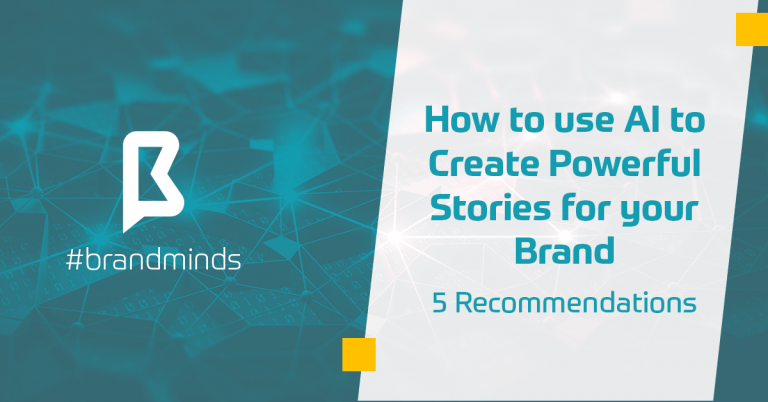
Creating powerful stories is about going beyond your brand or your product; it’s about your audience.
Yes, you have your audience profile persona in place, but people are much more than mere demographics – how old they are, where are they working, if they are married or not, if they are parents or living with their cat.
Today’s challenge for marketers and other professional communicators is creating powerful stories for your brand that your audience connects with on a deep emotional level.
Martin Adams is CEO and co-founder of Codec, a company which specialises in Artificial Intelligence Marketing. Martin has a 15-year experience in technology, media and blockchain.
Learn more about Codec here: This tool helps you create content your audience will love.
This article presents his recommendations on how to use AI to create stories.
How to use AI to Create Powerful Stories for your Brand
First of all why do marketers need the help of AI?
Here are 8 reasons marketers need the support of AI according to Martin Adams, CEO of Codec:
- Because audiences are fractured and fragmented;
- Audiences are spending time on different locations and different mediums;
- The social platforms are constantly crafting new creative formats;
- Content clutter is reality which means getting through to your audiences, even if the story is great, is harder and harder: on the internet, in just one minute, there are 3.7 Million search queries on Google, 18 Million text messages, 973.000 Facebook logins etc and the numbers are rising since 2017;
- Increased expectations from your audience – according to the Millennial Research Study published by McCarthy Group on January 2018, 78% Millennials expect to be entertained by marketing content they consume;
- The traditional advertising content – rather than the storytelling approach – is no longer enough or efficient, it no longer brings the expected results;
- The UGC content is more relevant to your audience than brand focused content;
- The audience fights back interrupting advertising with adblock tools.
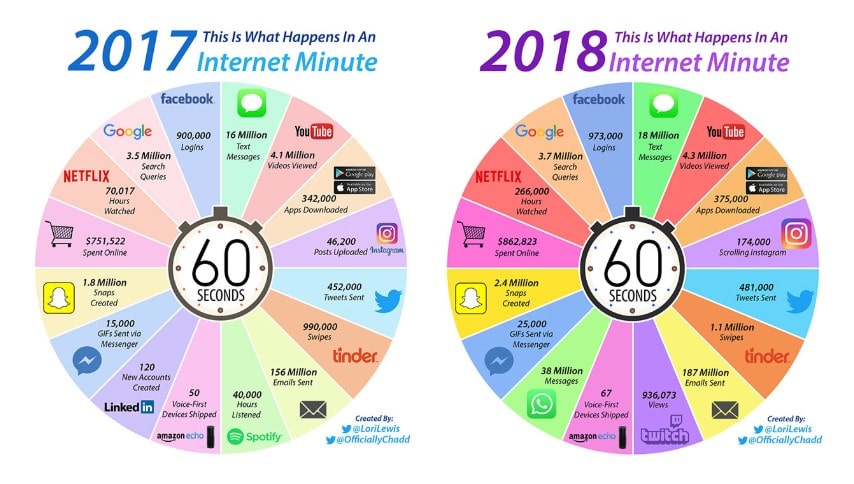
source: visualcapitalist.com
So far marketers and brand managers have used technology to manage, distribute and measure content created by their teams. Technology did not support communication professionals at the insights or creating stage of their marketing campaigns.
Unfortunately, statistics have shown that campaign effectiveness is decreasing starting with 2012 according to ipa.co.uk.
Brands have seen that sales activation activities have brought short-term sales uplift while brand-building activities have been directly linked to long-term sales growth.
Marketers need to make their brands relevant in their culture again. AI can play a role here.
Martin Adams, CEO of Codec.ai
Brands need to be relevant for audiences without interruptions.
How are they going to do that?
- Create engaging customer experiences to be noticed;
- These customer experiences need to be interesting;
- Content marketing is the appropriate tool to achieve this goal.
How can you use AI to create powerful stories that generate better leads and customer experiences?
Here are 5 recommendations.
Today AI can support and assist marketers and communication professionals at the first step before creating content – insights.
1. Use AI to identify the right audiences
Martin Adams recommends marketers to identify tribes, not demographics because tribes are networked groups of individuals who share the same interests and passions.
Why market to tribes, not demographics?
They are identifiable, stable, united by shared rules of behaviour and preferences.
2. Use AI to build empathy with the right audience from the beginning
With the help of AI understand what the tribe wants to consume beyond your brand or product: topics of discussion, deep passions, what their audience cares about.
Then create content around that, insert your brand/product inside the area that your audience is interested about.
[bctt tweet=”Understanding your audience’s demand makes storytelling possible, impactful and efficient.” username=”brand_minds”]
We need to stop interrupting what people are interested in and BE what people are interested in.
Craig Davis, former Creative Director of Saatchi & Saatchi
3. Use AI to seek out behaviours, passions and need states
Use AI to seek out behaviours, don’t create your marketing campaign with the sole purpose of interrupting your audience’s behaviours.
[bctt tweet=”Focus on generating insights that reflect the stable passions and need states of your audience.” username=”brand_minds”]
Identify one insight that is characterized by the following features:
- your tribe is passionate about this need;
- this need is underserved;
- this need is emotional and deeply connected to your audience’s psyche.
4. Use AI to help you leverage the right data
[bctt tweet=”Marketers need to switch from intent-focused data to empathy data.” username=”brand_minds”]
Intent-focused data is shown by search engines and help drive e-commerce behaviours. But this data doesn’t provide marketers with meaningful data regarding that person.
[bctt tweet=”Marketers shouldn’t talk to their audience only with the purpose of achieving brand’s commercial goals.” username=”brand_minds”]
Marketers need to extract empathy data from understanding how the audience interact with content and culture.
Storytelling starts by understanding culture and AI is the most powerful tool in the world to do this.
Martin Adams, CEO of Codec.ai
5. Use AI to understand the who, what, why and when of their content preferences
AI can identify the following details:
- the tone of voice that your audience is responding to;
- the image types, colors and framing that your audience like;
- the content format they prefer;
- the platform they spend time on.
Here is a great example of audience-focused marketing campaign from Dove, You’re more beautiful than you think:
Mistakes to avoid when using AI and data to create better stories
As intelligent as it may be, AI is just a tool and Martin Adams warns marketers against making the following mistakes:
#1 Thinking that content is a format choice
Storytelling is about making things that audiences want and care about after we understand demand. It is not a particular format choice – images or videos or questionnaires.
You need to listen, really listen with no judgement.
Remember: it’s not about your brand’s needs, it’s about your audience’s.
#2 Having blind faith – in either yourself or the AI
Don’t fall into the trap of thinking that you know better than the AI. AI is designed to help and support your marketing efforts providing you with valuable information.
Also don’t go to the other extreme of having blind faith into the AI – use your intuition to veto bad data.
#3 Doing content by numbers
AI cannot create content that you should follow by numbers.
Instead use your creativity to bring AI supplied data to life.
Wrapping Up
- Find your tribe;
- Understand your tribe’s demand;
- Build empathy;
- Deliver them the content they want in the form they prefer.
5 AI Applications to Improve Your Business
Interest in machine learning and AI is growing.
Google is one of the leading tech giants that developed products powered by AI technology: Google Duplex is one example.
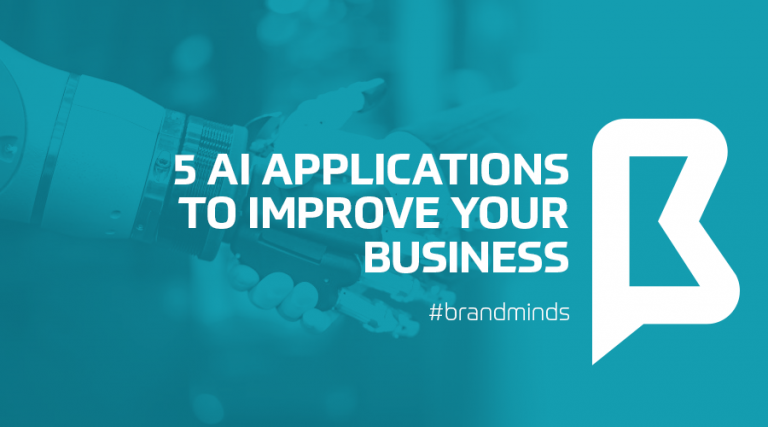
Are you interested in using AI technology for business purposes?
Here are 5 applications of AI in business:
1. OCADO – AI-based fraud detection system for online grocery purchases
Ocado is the world’s first AI-based fraud detection system for online grocery purchases.
The system identifies orders that are delivered but not paid for and determines whether it is the result of malicious intent by analysing data from past orders.
Ocado benefits from the implementation of Google’s open sourced TensorFlow which is a deep neural network. The Ocado engineers claim this implementation has improved the system’s precision of detecting fraud by a factor of 15.
2. PHRASEE – AI for email marketing
Phrasee is the AI-powered software, which automates and optimises the writing of marketing email subject lines.
Tour operator Virgin Holidays is using Phrasee and noted that it is outperforming humans by up to 10 percent when it comes to all-important open rates. Virgin fed Phrasee its brand guidelines and three years of email subject lines so that it could pick up the brand’s tone of voice. Phrasee now feeds back optimised subject lines for the marketing team to use.
Once Virgin turned over the keys to Phrasee open rates jumped by two percent – accounting for several million pounds in revenue.
3. LUVO – AI-based customer service
Royal Bank of Scotland has recently launched Luvo – a natural language processing AI bot, which answers customer questions and performs simple banking tasks like money transfers. If Luvo is unable to find the answer, it will pass a customer over to a member of staff. With Luvo, RBS has joined other banks, which have created similar virtual assistants such as Sweden’s SwedBank and Spain’s BBVA.
4. ANSWERDASH – AI-based self-service support tool
Business card website Moo.com uses AnswerDash – a fairly basic AI and ML tool to improve customer interactions. AnwerDash uses Moo.com’s data to give contextual support in the customer’s online journey.
With AnswerDash, the company saved money on its call centre and received additional revenue with customer conversion.
5. CHATBOT – AI concierge
Las Vegas Sands Corporation, the owner of Venetian and Palazzo, famous Las Vegas hotels – has designed a virtual assistant chatbot for guests.
The chatbot functions as a virtual concierge; it is a means of communication the hotel guests feel comfortable with. The chatbot replaces email and SMS and it’s a great tool for guests because they can engage with it whenever they want through their Facebook account.
With this chatbot, the hotels’ management aims to help guests order room service faster.
Gmail’s Makeover And How It Can Influence Your Working Habbits
Google gave Gmail a big refresh that will change the way you interact with it and help you even more than before. As first reported by The Verge, the upgrade was revealed in a message from Google to administrators of G Suite accounts. The message stated that the changes would be coming to consumer Gmail accounts, as well as G Suite accounts.
The redesigned Gmail web interface is focused on quick productivity actions. Google is introducing features such as attachments chips, hover actions, and hover cards to make the static inbox experience more interactive without the need for multiple clicks. Google is also surfacing several labs features that were previously hidden in Settings > Labs, like canned responses, the ability to create multiple inboxes, and a preview pane to customize your preferences for different inboxes.
According to Fox News, Gmail is getting deeper G Suite interactions to directly create and edit Google Calendar invites, send notes to Google Keep, and manage to-do items in Tasks. “Google is also releasing new Tasks mobile apps for Android and iOS for adding and editing tasks from your smartphone to manage in Calendar and Gmail. The Tasks app is available today in the iOS App Store and Google Play Store. Aside from the new-look web app and Tasks mobile apps, Google also announced new security features, including Gmail confidential mode, and expanded AI capabilities like smart replies and notification priority settings,” added Fox News.
Here are some of the main changes and how they will impact you
Smart Replies and Smart Filtering
New AI-powered features in Gmail, like Nudging, Smart Reply and high-priority notifications, can now help you spend more time on work that matters. With Nudging, Gmail will proactively remind you to follow up or respond to messages, making sure you don’t drop the ball.
Smart Reply offers pre-set, one-line replies for any email. The replies are not just standard answers, but customized according to each email, due to machine learning, that suggest responses to you, in order to help you save time. Moreover, two new features promise efficiency improvements through smart filtering. Notifications for high-priority messages help you focus on your most important work. From now on, Gmail will pay attention to frequent newsletters and suggest you give them the boot by unsubscribing if you stop opening them.

Protection from risky emails
Built-in Information Rights Management (IRM) controls also allow you to remove the option to forward, copy, download or print messages. This helps reduce the risk of confidential information being accidentally shared with the wrong people. Confidential mode will begin to roll out to consumer Gmail users and a limited number of G Suite customers in the coming weeks (broader rollout following).
Moreover, the redesigned security warnings within Gmail are simpler to understand and give a clear call to action to employees. These bigger, bolder warnings will help you be even more informed when it comes to potentially risky email.
“When you compose sensitive email you can remove options to forward, copy, download, or print the messages. The option to protect your outgoing email with two-factor authentication — the recipient needs to log into their own email and click to receive an unlock code via SMS text to read the message you sent could help you sleep better at night if you later discover their email account was hacked,” wrote Digital Trends.
Icons for Action Buttons
In the old Gmail interface, you’ll find the action buttons in the inbox along with a text label. In the new interface, Google has turned these action buttons into icons — you can’t read any text labels anymore. Also, this new icon menu has got two additional actions for quick access: Mark as read/unread and Snooze.
New Sidebar
It shows icons of other Google services like Calendar, Keep and Tasks. Tapping any icon expands the sidebar allowing you to quickly access your calendar entries, notes or tasks synced to your Google account. Any changes you do in these apps is synced back to the cloud and is instantly accessible on your other devices. You can also access third-party Gmail add-ons from the same side panel.
New native offline capabilities in Gmail on the web can help you work without interruption when you can’t find Wi-Fi. Search, write, respond, delete, or archive up to 90 days of messages, just as you would working online, but offline.
You can use Tasks to create tasks and subtasks, and even add due dates with notifications to help you stay on track. And because Tasks closely integrates with G Suite, you can simply drag and drop an email from Gmail into Tasks to create a to-do. Tasks with due dates can also appear in your Calendar. You can download the new Tasks mobile apps from the Google Play Store or iOS App Store today.
Different Display Modes
According to Economic Times, Google has added three view modes: default, comfortable and compact. Default view is ideal for large screens where you can open the preview of attachment in an email right from the inbox. This means you don’t need to open the email itself. Comfortable view is great for laptop users – it has large text which is easy to read sans the preview option of the default view. Compact view is the same as before.
10 Less Known Facebook Features That Help Marketers
The most loved and used social media platform is changing so fast that is hard to keep track of all of its novelties. Social media specialists are spending more and more time online reading and trying all about the new changes in order to bring them and explain them to their clients and followers.
This is the main reason we decided to focus today on Facebook and show you some of the most important features you, as a marketer, shouldn’t forget to focus on when it comes to your business Facebook page. Especially because they tend to be forgotten, while they have an important role of their own. In no particular order, here they are:
- The download your Facebook history for business analytics option. You will have your entire Facebook history at your disposal, finding: review all the posts, photos, and videos you’ve shared; your messages and chat conversations; past info from the About section of your profile; ads you’ve clicked on; historical data, facial recognition data,etc.
- Travel agencies and tourism boards could let people explore certain places in VR before buying their tickets.
- Real estate companies could let potential buyers look at houses in VR before actually visiting the houses.
- Furniture companies could let customers “try out” furniture in their homes before purchasing.
- Clothes retailers could let customers “try out” clothes and chat with friends about them before buying, or even let them customize their avatars with their clothes.
- Education institutions and online learning platforms could let students attend classes together.
Facebook Spaces is a virtual reality (VR) app developed by Facebook that lets you invite and interact with up to 3 of your Facebook friends using a VR device. Right now, you can download Facebook Spaces for Oculus Rift or HTC Vive . Once you open Facebook Spaces in VR, you’ll be asked to take off your headset and log into your Facebook account.
For brands’ representatives this feature can be easily used, as Buffer Social says:
3. Free Images for Ads
When you create a Facebook ad, you can choose from a searchable database of thousands of free stock images from within the Facebook image library.
4. Prioritize Who to See First
Changing your news feed preferences gives you control over what appears in your news feed. To choose which posts you want to see first in your news feed, click the arrow in the upper-right corner of the page and choose News Feed Preferences from the drop-down menu. Then click Prioritize Who to See First. This feature allows you to select from both personal profiles and business pages that you’re following so their updates get visibility in your news feed. You can also choose to unfollow people so you stop seeing their updates without unfriending them. If you find that your news feed is too full of updates from groups, you can also mute them by unfollowing updates from them.
5. The Camera Effects Platform
This feature allows you to use trackers, data, animation and more to create interactive, shareable effects that respond to people and objects in their surroundings. Through the platform developers can create frames, masks, and special effects for the Facebook camera. The two main products on this platform are Frame Studio and AR Studio.
It’s the place where people can browse and find Messenger bots, nearby places and businesses to message. Organized by category, recent activity and featured experiences, Discover complements existing entry points, including advertising to Messenger Codes, me.me links and plugins. The Discover tab can be located in the lower right-hand corner of the Messenger home screen and will enable users to browse recently visited businesses, featured experiences as well as bots and Pages. The bots are categorized and listed under various categories for easier access.
Facebook has also added chat extensions to the Messenger app that allow multiple people to chat with the same business at the same time. This allows users to directly add a bot to a group thread and share the conversation with other users in the group. Moreover, The Discover tab works with new parametric Messenger Codes, where people can scan such codes through the Messenger camera and link to a specific brand or business.
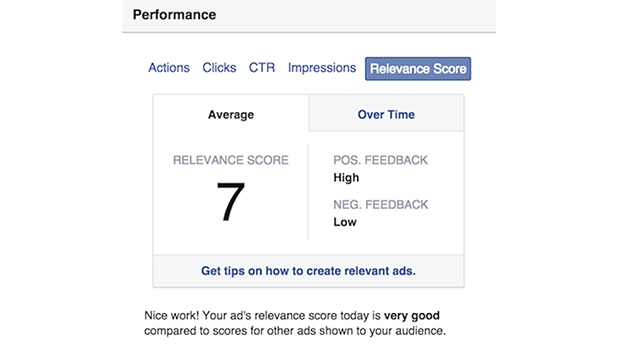
7. Relevance Score
Relevance Score metric is a measure of your Facebook ad’s effectiveness and the equivalent of Google’s AdWords Quality Score, in their ad reporting dashboard. This new score is an important ad quality signal that will affect both your ad delivery and the cost you pay for your Facebook campaigns. Facebook will use feedback from ad viewers to determine this score on a scale of 1 to 10, with 10 being the highest possible score.
According to Facebook’s statements, the new feature can lower the cost of reaching people (the higher an ad’s relevance score is, the less it will cost to be delivered). Moreover, bid matters too. “For instance, if two ads are aimed at the same audience, there’s no guarantee that the ad with an excellent relevance score and low bid will beat the ad with a good relevance score and high bid. But, overall, having strong relevance scores will help advertisers see more efficient delivery through our system. It can help advertisers test ad creative options before running a campaign. Advertisers can test different combinations of image and copy with different audiences, and learn which combinations offer the highest relevance scores”.
At the same time, the feature promises to help optimize campaigns already in progress. While ad campaigns are running, advertisers can monitor their relevance scores.
8. Smart Replies for Pages
Facebook intends to help small businesses automate some of the customer support processes. Using AI, Smart Replies helps Page owners to respond to the most frequently asked questions that they receive, such as business hours, directions, and contact details. “The AI would grab information from the Pages, detect the questions asked, and reply with the appropriate information. It can help free up some of your time for you to create high-quality content and engage with your audience on social media. As the AI would grab information from your Page, it’ll be great to keep your Page information updated,” wrote Social Buffer.
9. Competition monitor
On Facebook Insights the Posts’ area, you will find “Top Posts from Pages You Watch”. There you can track other pages, from partners, competitors to friends. You can take a look at the metrics and spot the likes, posts and engagement on these pages. Moreover, Facebook will suggest you some pages to follow. You can also type in the names of brands you want to check out and add them to the list.
10. The Auto-optimization Rules
You can set up four different consequences if the conditions have been met: turn off the ad campaign, ad set or ad; send notifications to the ad manager; adjust budgets and manual bids. In order to set up an automated rule set, select a campaign, ad set or Facebook ad and go to the editing panel (Icon on the right side of the reporting table). Next, click on the “Create Rule” button to create a new rule set. You can create rules by selecting some conditions and telling Facebook what to do once the conditions are met.











